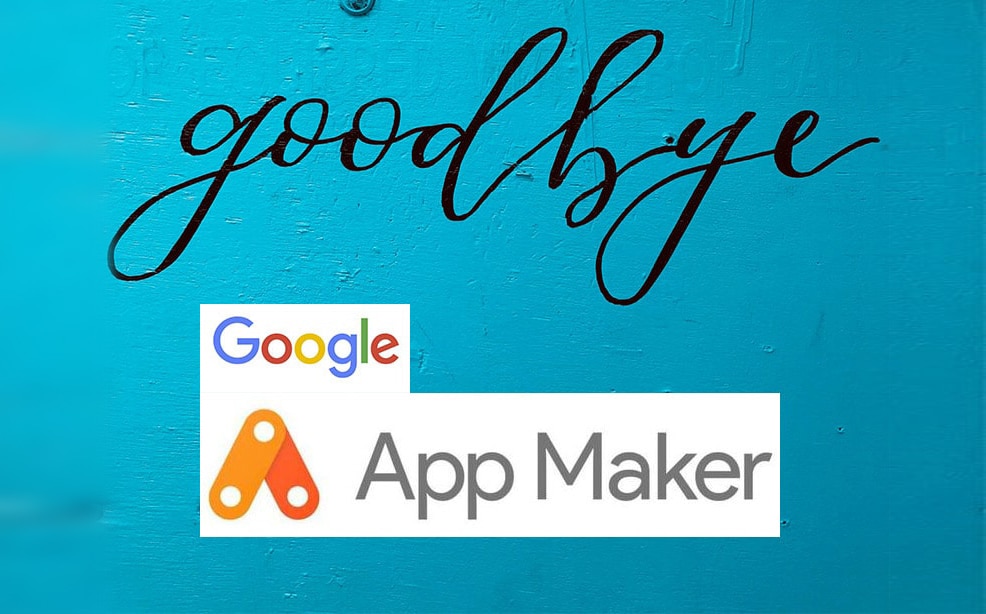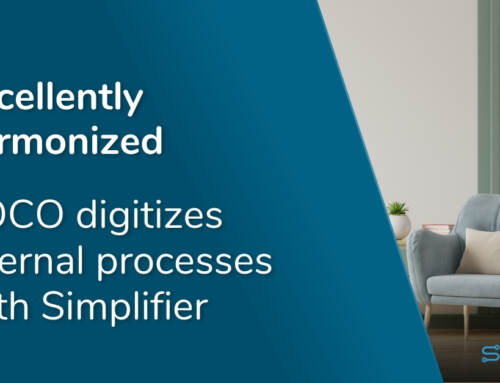Google AppMaker will be switched off in early 2021. Until then, already created low-code apps will still work. However, new apps can no longer be created since mid-April 2020. Anyone who has relied on AppMaker should therefore look for an alternative as soon as possible.
Reading time: Approximately 4 min.

A guest article by Christian Rentrop
Google is one of those enterprises that like to cut off old habits. However, in the case of the popular low-code platform AppMaker things happened particularly quickly: Only a little more than 18 months passed between the launch of the platform and the announcement of its closure. Google has been consistent despite high user numbers: Since April 15, 2020, the platform has not been accepting any new apps, and from January 19, 2021, it will be shut down: The service – and with it all apps – will be shut down. Reason enough to think about alternatives.
AppSheet is not a real alternative
The reason for switcthing off AppMaker is probably AppSheet: Google had purchased the No-code-platform around same time when the announcement of the AppMaker-shutdown was made. Now, the search engine giant presents the service as an alternative to AppMaker (german). With no-code, it is supposed to be even easier to create apps within the frame of the citizen developer concept. Nevertheless, old AppMaker apps cannot be transfered directly: While both services support the CloudSQL database to transfer data, apps per se need to be rebuilt after the move to AppSheet. This raises the question whether it is worth the trouble.
On the one hand, changing from low-code to no-code comes with significant functional restrictions in terms of portability and flexibility. On the other hand, one needs to wonder whether AppSheet is future-proof, as this was not the case with AppMaker.
Sticking with low-code
Enterprises and users, that are holding low-code-programing in high regard due to its large number of possibilities, will most likely not be interested in a no-code platform. The reason: No-Code is not conducive to many application scenarios. On top of that, AppSheet is also a closed platform that does not give away the source code in case of a shutdown: Thus, the next change including time-consuming learning, training and the rebuilding of all apps, of course, is already waiting to happen. Those who would like to avoid this should therefore also use the Google AppMaker shutdown as an opportunity to switch to a more open low-code provider. On the one hand, this allows them to stick with low-code platforms – and on the other hand, it ensures that they can rely on a future-proof system. Simplifier, for example, relies on open and portable web technology in the form of JavaScript source code: This can be extracted at any time and migrated to other development environments as required.
The Challenge: Recreating existing low-code solutions fast
The greatest challenge resulting from the AppMaker shutdown is that existing apps cannot be adopted, neither by AppSheet nor by any other low-code or no-code platform. This means that existing (app) content needs to be rebuilt in any case. In order to make this as smooth as possible, it is highly recommandable to back-up the database as a first step: Google offers a guide for this, which allows you to drag data records as CSV files from the AppMaker CloudSQL file. In turn, these can later be imported to the low-code platform. In addition, the app itself can also be exported from AppMaker. For the creation of new apps affected by the AppMaker shutdown, Simplifier offers a number of practical templates, tools and widgets as well as import functions for the data sets. Of course, it can also be useful to write down algorithms so that old AppMaker apps can be “recreated” quickly by the new low-code provider.
The Simplifier advantages
Simplifier offers enterprises looking for an AppMaker alternative the advantage that silo solutions are being avoided. Instead, a holistic approach sees to it that the platform – unlike AppMaker – will not become a dead end. In addition to typical IoT and business applications, Simplifier also makes it possible to create complex applications with integration of third-party services, other systems and devices, augmented reality and typical APIs on a low-code basis – without creating hurdles
This will spur on the rapid-development mindset within your enterprise. The resulting mobile apps and desktop applications are not only highly portable, but also operating system-independent, mobile-friendly and, if required, can be used offline. Thus, the low-code platform becomes an all-in-one solution throughout the entire enterprise, allowing low-threshold development of applications for all business areas.
Conclusion
If you should be facing the problems mentioned above, you ought to view the shutdown of AppMaker as an opportunity: It offers the chance to leave Google’s infrastructure completely or in parts and to rely on more open and flexible low-code concepts for more flexible app creation. Certainly, the change to Simplifier in a way is also a “new beginning” that needs to be mastered, since the technology also needs to be mastered and the re-creation of applications previously created on AppMaker needs to be done. However, these are a worthwhile investment in future-proofing, flexibility and time savings, which ultimately results in better integration of the business units and faster development of practical solutions.
If you would like to learn more about Simplifier, feel free to contact us!
About the author
Christian Rentrop studied technical journalism at the Bonn-Rhein-Sieg University of Applied Sciences. In 2014 he founded the TechBlog www.tutonaut.de, of which he is still the managing director today. He has been working as a freelance journalist for more than ten years and runs the Rheinwort editorial office. Christian Rentrop lives in Cologne.





